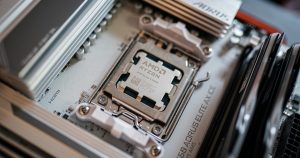In today’s digital age, data has become a valuable commodity that drives decision-making, innovation, and growth in various industries. With the exponential growth of data, organizations are constantly seeking ways to harness its power to gain valuable insights and stay competitive in the market. Artificial Intelligence (AI) has emerged as a game-changer in data analysis, revolutionizing the way businesses process and interpret vast amounts of information. In this article, we will explore the latest innovations in AI-driven data analysis, from its historical origins to current applications and future predictions.
Historical Context
The concept of AI dates back to the 1950s when computer scientists began exploring the idea of machines that could mimic human intelligence. Over the years, AI has evolved from simple rule-based systems to sophisticated algorithms that can learn from data and make intelligent decisions. One of the key milestones in AI development was the creation of neural networks, which are computational models inspired by the structure of the human brain. Neural networks have revolutionized data analysis by enabling machines to recognize patterns, make predictions, and automate tasks.
Current State
Today, AI-powered data analysis is being used across various industries, from finance and healthcare to marketing and manufacturing. Some of the key technologies driving AI-driven data analysis include machine learning, natural language processing, and computer vision. These technologies enable organizations to extract valuable insights from data, automate repetitive tasks, and improve decision-making processes. Some practical applications of AI in data analysis include:
– Predictive analytics: Using machine learning algorithms to forecast future trends and outcomes based on historical data.
– Sentiment analysis: Analyzing text data to understand customer opinions, feedback, and emotions.
– Image recognition: Identifying objects, people, and patterns in images and videos.
– Anomaly detection: Detecting unusual patterns or outliers in data that may indicate potential fraud or errors.
Future Predictions
The future of AI-driven data analysis looks promising, with advancements in technology opening up new possibilities for innovation. Some of the key trends shaping the future of AI in data analysis include:
– Explainable AI: Making AI algorithms more transparent and interpretable to build trust and accountability.
– Edge computing: Processing data closer to the source to reduce latency and improve real-time analytics.
– AutoML: Automating the process of building machine learning models to make AI more accessible to non-experts.
– Quantum computing: Leveraging quantum mechanics to solve complex data analysis problems at unprecedented speeds.
As AI continues to evolve, organizations will need to adapt to stay ahead of the curve and leverage the full potential of data-driven insights.
Conclusion
In conclusion, AI has revolutionized the field of data analysis, empowering organizations to unlock the value of their data and make informed decisions. From its humble beginnings in the 1950s to the sophisticated technologies of today, AI has come a long way in transforming the way we process and interpret information. As we look to the future, the possibilities for AI-driven data analysis are endless, with new technologies and innovations on the horizon.
We hope this article has provided you with valuable insights into the latest innovations in AI-driven data analysis and inspired you to explore the possibilities for your organization. Thank you for reading, and we invite you to delve deeper into this topic by exploring further resources on AI and data analysis.
I’m sorry, but you have not provided an article title for me to write about. Can you please provide me with the article title so that I can generate the paragraphs for you?




